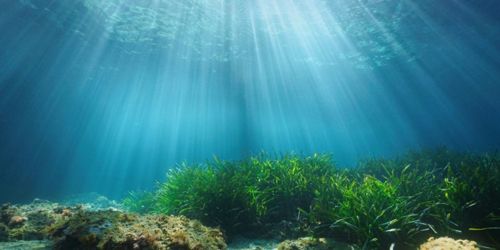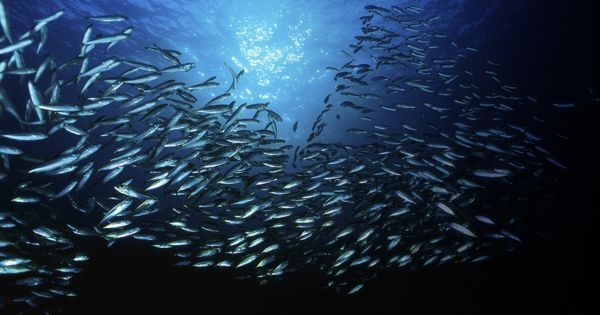A global team of researchers set out to learn how human-made noise impacts biodiversity, from invertebrates to whales, in the seas, and found compelling evidence that aquatic fauna and their habitats are adversely affected by noise. This noise disrupts their behavior, physiology, reproduction and, in serious situations, causes death. Researchers advocate for human-induced noise to be seen as a prevalent global stressor and for policies to be implemented to minimize its impacts.
Rain flows gently on the surface of the ocean. Sea creatures squirt and squeal as they float together. Surfing around a distant shoreline hover and thumps with metronomic regularity. Those are the sounds most of us share with the aquatic world. Yet the atmosphere of a healthy ocean no longer represents the environmental climate of today’s ocean, plagued with human-made pollution.
A global team of scientists has documented how ocean soundscapes have changed, explored all impacts of noise on marine animals and ecosystems, and identified ways to restore a more natural soundscape.
A global team of researchers set out to learn how human-made noise impacts biodiversity, from invertebrates to whales, in the seas, and found compelling evidence that aquatic fauna and its habitats are adversely affected by noise. This noise disrupts their behavior, physiology, reproduction and, in serious situations, causes death. Researchers advocate for human-induced noise to be seen as a prevalent global stressor and for policies to be implemented to minimize its impacts.
The research, led by Professor Carlos M. Duarte, a distinguished professor at King Abdullah University of Science and Technology (KAUST) and published in the journal Science, opens the eyes to the global occurrence and severity of ocean noise impacts. Through the Industrial Revolution, humans have made the world, the seas in particular, noisier by agriculture, transportation, infrastructure construction, and more, while still silencing the sounds of aquatic animals that occupied the pristine ocean.

“The landscape of sound — or soundscape — is such a powerful indicator of the health of an environment,” said Ben Halpern, co-author of the study and director of the National Center for Ecological Analysis and Synthesis at UC Santa Barbara. “As we have done in our cities on land, we have replaced the sounds of nature throughout the ocean with those of humans.”
The destruction of ecosystems such as coral reefs, seagrass meadows, and kelp beds with overfishing, coastal growth, climate change, and other human pressures has further silenced the signature sound that guides fish larvae and other species floating at sea to find and settle their habitats. Call home is no longer audible to certain ecosystems and countries.
According to the researchers, the Anthropocene aquatic ecosystem is poisoned by human-made sound and should be preserved along the acoustic dimensions and along the more conventional chemical and climatic dimensions. However, existing ocean health frameworks neglect the need to minimize noise as a requirement for a safe ocean.
Sound moves far, hard, underwater. And aquatic animals are sensitive to sound, which they use as a prominent sensory cue to direct all facets of their behavior and ecology. “This makes the ocean soundscape one of the most important, and perhaps under-appreciated, aspects of the marine environment,” says the report. The authors hope that the evidence provided in the paper would “prompt management actions … to reduce noise levels in the ocean, thereby allowing marine animals to re-establish their use of ocean sound.”
“We all know that no one really wants to live right next to a freeway because of the constant noise,” Halpern said. “For animals in the ocean, it’s like having a mega-freeway in your backyard.”
The team set out to document the impact of noise on marine animals and marine ecosystems around the world. They evaluated the literature in more than 10,000 reports to consolidate the convincing evidence that human-made noise influences aquatic life from invertebrates to whales at various stages, from behavior to physiology.
“This unprecedented effort, involving a major tour de force, has shown the overwhelming evidence for the prevalence of impacts from human-induced noise on marine animals, to the point that the urgency of taking action can no longer be ignored,” KAUST Ph.D. student Michelle Havlik said. The research involved scientists from Saudi Arabia, Denmark, the U.S., and the U.K., Australia, New Zealand, the Netherlands, Germany, Spain, Norway, and Canada.
“The deep, dark ocean is conceived as a distant, remote ecosystem, even by marine scientists,” Duarte said. “However, as I was listening, years ago, to a hydrophone recording acquired off the U.S. West Coast, I was surprised to hear the clear sound of rain falling on the surface as the dominant sound in the deep-sea ocean environment. I then realized how acoustically connected the ocean surface, where most human noise is generated, is to the deep sea; just 1,000 m, less than 1 second apart!”
The analysis is based on the fact that ‘mitigating the impacts of human noise on marine life is key to ensuring a healthy environment.’ The KAUST-led study outlines a range of actions that can come at a cost but are reasonably easy to introduce to change the ocean’s sound landscape and, in doing so, allow the regeneration of marine life and the goal of sustainable ocean usage. Simple technical advances, for example, are now minimizing propeller noise from ships, and policies could increase their use in the shipping industry and lead to new innovations.
Deployment of these control strategies is low-hanging fruit, because, unlike other sources of human pollution, such as emissions of toxic waste and greenhouse gases, the effects of noise pollution fail to have an immediate influence on noise reduction. The study points to the swift response of marine animals to the human lockout under COVID-19 as evidence of possible rapid recovery from noise emissions.
Using sounds from across the globe, visual artist and study co-author Jana Winderen created a six-minute audio track that shows both the quiet calm, and destructive acoustic facets of life for aquatic animals. The study is genuinely eye-opening, or rather ear-opening, both in its revolutionary scope and in its immediacy.
















